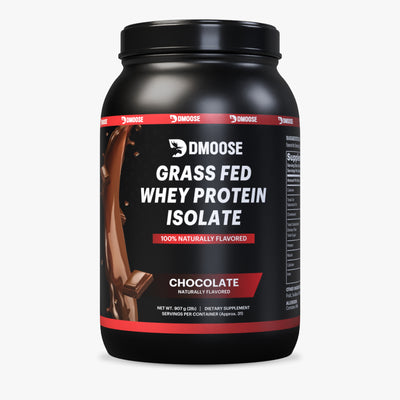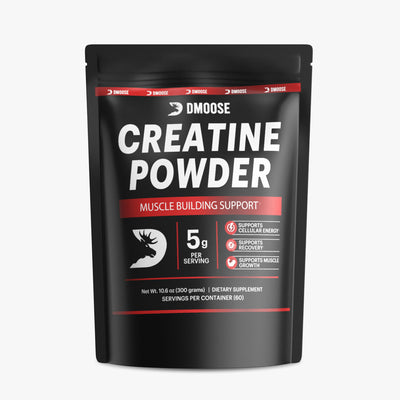Anyone who's ever been on a diet knows that there are a lot of different choices out there. Low-carb, low-fat, high-protein, vegan, paleo, the list goes on and on. So how do you know which one is right for you? And if you are a beginner and just started losing weight, things get even more confusing. The truth is, there is no one-size-fits-all answer. It depends on various factors, including your age, activity level, medical history, goal, and food preferences.
While we’re on the topic of different diet plans, let us share a meal plan that most people have heard of, the nutritarian diet. The nutritarian diet is a plant-based, gluten-free plan that limits salt and fat. Dr. Joel Fuhrman created it in 2003 as part of his book "Eat to Live." The diet promotes Nutrient-Dense Plant- Rich (NDPR) foods instead of processed and high-calorie ones, with the goal of consuming less sugar while still getting all necessary nutrients from different plant food options.
Fuhrman created different meal plans and products, each for a specific purpose. For example, his book "Eat to Live" promises to help readers lose 20 pounds (9.5 kg) in six weeks, while his newer edition "10 in 20" detox regimen promises to drop 10 pounds (4.5 kg) in 20 days - both without tracking calories or monitoring portions. It offers other health benefits as well besides weight loss, so let’s find out more details and see how a nutritarian diet might help you shed those stubborn kilos!
Related Article: What is a 1000 Calorie Diet Plan and Why It Is an Effective Solution to Rapid Weight Loss
Guidelines for Nutritarian Food Consumption

The primary principle of the nutritarian diet is that the amount of nutrients you take per calorie affects your weight and long-term health, so it promotes whole or less processed foods in order to be nutrient-dense.
The nutritarian diet does not restrict your calorie consumption; instead, it specifies a percentage range of total calories that every food group must offer per day.
- Eat as many raw vegetables as you can. They should account for at least half of your daily vegetable intake, except potatoes. Also, consume around half a pound of cooked green vegetables daily.
- Eat beans/legumes as a preferred carbohydrate food, making at least half a cup daily.
- Eat 3-5 servings of fresh fruit daily.
- Eat cooked starches upto 1 serving only (approximately 1 cup) daily until your body mass index becomes ideal.
- Restrict animal products to less than 8 ounces weekly, or stop eating them completely until you reach your health goals.
- Eat 1 ounce of raw nuts and seeds at minimum, but only with meals, not as snacks.
- Lessen salt (less than 1000 mg a day) and minimize processed foods, including oils, sugar, fruit drinks/juices, white rice, refined carbohydrates, white flour, soda, and white potatoes.
- There is no specific calorie count or restriction for this diet.
- Take a multivitamin with B12, iodine, zinc, and vitamin D and an algal oil supplement to offset any potential nutrient deficits.
Health Benefits of the Nutritarian Diet
A nutritarian diet is primarily vegan, including some multivitamins and other supplements. The nutritarian diet offers numerous benefits, such as helping weight loss, improving heart health, encouraging nutritious eating, stabilizing sugar levels, and resistance to diseases.
Aids in Weight Loss
For various reasons, the nutritarian diet is believed to promote weight loss. Reducing calorie-dense foods like eggs, meat, dairy, oil, and high-sugar processed meals naturally lowers your calorie consumption. The diet may cause some people to voluntarily eat fewer calories daily by preventing snacking.
Plant foods, such as fruits, vegetables, seeds, whole grains, nuts, and legumes, are emphasized in this diet. According to a study, these meals are high in fibre, which can help curb hunger and cravings.
Foods high in viscous fibres like pectins, beta-glucans, and guar gum, which are present in most plant foods recommended in this diet, are particularly satisfying and fill your cravings.
According to a 6-weeks study, the overweight adults following the nutritarian diet lost approximately 10.8 pounds (4.9 kg) and 1.9 inches (4.8 cm) of waist size.
Furthermore, evidence suggests that plant-based diets, even when you're permitted to eat as much as you like, such as in the case of the nutritarian diet, can help you lose weight.
Helps Boost Heart Health
Eating more vegetables is good for heart health. According to studies, increased vegetable consumption as a percentage of total calories is associated with a reduction in the risk of heart disease and stroke.
According to a study, vegetables showed the strongest protective effect against CVD. Each daily portion lowered the overall risk of mortality by 16 percent. Each portion of raw vegetable salad was linked to a 13% reduction in cardiovascular risk, while each portion of fresh fruit was linked to a lesser but still substantial 4% reduction.
Moreover, as per research, 10 adults with diabetes who followed the nutritarian diet for seven months had their blood pressure drop from an average elevation of 148/87 mm Hg to a standard 121/74 mm Hg.
Encourages Nutritious Eating
The nutritarian diet includes plant-based products that are the best source of micronutrients, including many minerals, vitamins, electrolytes etc. having no calories, hence they are perfect as nutritious foods.
According to the Mayo Clinic, the nutritarian eating style emphasizes plant-based, minimally processed, and nutrient-dense meals like fruits and vegetables, contributing to general health. These meals also contain a lot of fibre, which is an essential nutrient that aids digestion and keeps bowel movements regular.
Stabilizes Blood Sugar Levels
The nutritarian diet is high in fibre, low in added sugar, and focuses on foods with a low glycemic index. These low-glycemic foods are absorbed more slowly and are less likely to cause blood sugar spikes.
According to research, nutrient-dense diets based on whole, barely processed foods have been demonstrated to reduce blood sugar levels and fight against type 2 diabetes.
In a small study mentioned earlier, adults with diabetes saw a 2.4% decline in hemoglobin A1C, a sign of long-term blood sugar control, after implementing the nutritarian diet for 7 months, and 62% of patients had normal pre-diabetes hemoglobin A1C levels.
Related Article: The 7 Day Diabetes Meal Plan - The Ultimate Guide to Diet & Nutrition
Boosts Longevity and Fight Diseases
Plant-based diets with many minimally processed foods and good fats, such as the nutritarian diet, may help you live longer and healthier.
A meta-analysis found that vegetarian diets are associated with a 25% decreased incidence of fatal heart attacks. Vegetarian diets were also connected to a lower cancer risk of 8% and 15%, respectively.
Another study found that eating a diet rich in fruits, vegetables, nuts, minimally processed foods, and healthy fats can offer you to live longer and lessen your risk of chronic illnesses like diabetes and heart disease.
Foods to Eat in the Nutritarian Diet
The following are some of the recommended food options for a nutritarian diet:
- Vegetables: All vegetables, whether raw or cooked and tiny portions of starchy vegetables like potatoes.
- Fresh or dried fruit: You can eat any fruit. However, dried fruits must be without any additional sugars or oils.
- Nuts and seeds: All nuts and seeds are safe to eat. However, they should be eaten raw or dry-roasted with no salt added.
- Legumes: Beans, peas, lentils, and foods manufactured from beans that have been minimally processed, such as tofu and tempeh, are also permitted in modest quantities.
- Whole grains and potatoes: You can eat whole grains and potatoes in tiny portions.
- Wild and non-factory-farmed animal foods: Only a modest amount of meat, dairy, fish, and eggs are allowed.
Foods to Avoid in the Nutritarian Diet
The following are the foods to avoid:
- Factory-farmed animal products: Try to avoid processed meat, seafood, poultry, and fish.
- Processed foods: Do not eat chips, croissants, crackers, and other high-calorie, high-sugar packaged items.
- Sweets: This category covers sweeteners such as table sugar, maple syrup, and honey, as well as sweets.
- Processed fruits: Fruit juices, fruit-based drinks, and tinned fruit are all prohibited.
- Oils: Olive, avocado, and flaxseed oils, as well as other cooking and culinary oils, are not allowed.
- Added salt: Avoid using too much table salt in dishes you make, including the sauces and dressings you buy from stores.
- Alcohol: Do not consume alcoholic beverages such as beer, wine, liquor, and other alcoholic beverages.
- Caffeine: Coffee and caffeine-containing foods such as chocolate should be avoided or consumed in moderation.
Can You Exercise With a Nutritarian Diet?
Yes! You can. Dr. Furhman writes in his book, “Exercise is recommended as part of a healthy lifestyle, but it is not essential for weight loss on the nutritarian short term program. Exercise helps you lose weight and get healthier, and "vigorous exercise has a profound influence on promoting longevity.”
He further added, “Most of my clients have a fitness club in their house, that is, a stairway leading to the upstairs level and one going down to the basement. A gym membership is a plus with a range of equipment accessible to work out numerous body parts and reduce boredom.”
It means you can do a little exercise, mainly cardio or aerobics, along with eating nutrient-rich foods.
Related Article: Why Everyone Should Be Doing Cardio and What are the Best Exercises to Do
Sample Menu and Meal Plan
The nutritarian diet plan is a 6-weeks weight loss program. Here is the sample menu for the beginners who want to follow the nutritarian diet:
Day 1
- Breakfast: Coffee with a bit of unsweetened almond milk
- Lunch: Mix fruits and nuts
- Dinner: Black eye peas, steamed cabbage, chocolate cherry cookies
Day 2
- Breakfast: Large fruit bowl of banana, blackberries, kiwi, raspberries, papaya, cantaloupe, and honeydew. Coffee with unsweetened almond milk.
- Lunch: Large bowl of spring mix salad with red pepper.
- Dinner: Black eye peas with a large serving of broccoli.
Day 3
- Breakfast: Whole grain pancakes with blueberries and coffee with unsweetened almond milk.
- Lunch: Spinach salad with black beans, red pepper, black olives, grape tomatoes, avocado, sunflower seeds, and sun-dried tomatoes.
- Dinner: Tofu marinara fingers, some steamed corn and peppers, and a fudgy black bean brownie.
Day 4
- Breakfast: Large fruit bowl of banana, blackberries, kiwi, raspberries, papaya, cantaloupe, and honeydew with half a tablespoon of ground flax seed.
- Lunch: Large salad with red pepper farro, black beans, sunflower seeds, baby carrots, black olives, grape tomatoes, one-quarter avocado, sunflower seeds, and sun-dried tomatoes.
- Snack: Crispy Italian kale chips.
- Dinner: Pita pizza made with whole-grain pita bread with low salt pizza sauce, chopped red pepper, orange, chopped spinach, mushrooms, bell peppers, pineapple, chopped onion, and black olives. Top it with non-dairy cheese and some herbs.
Day 5
- Breakfast: Bowl of fruit, including banana, blackberries, kiwi, raspberries, papaya, cantaloupe, and honeydew with ground flax seed.
- Lunch: Low salt vegetable and lentil soup.
- Snack: Grapes and water.
- Dinner: Lentil meatloaf with steamed cabbage and chocolate cherry cookies.
Day 6
- Breakfast: Fruit bowl of pineapple, blueberries, blackberries, kiwi, raspberries, and dark cherries.
- Lunch: Kale chips
- Dinner: Spaghetti marinara made with soybean paste, low salt marinara sauce, zucchini, and chopped spinach.
Day 7
- Breakfast: Avocado toast made from one slice of sesame bread and half avocado. Mix fruit bowl with flax seeds.
- Lunch: Mixed greens vegetables and spinach salad with red and orange peppers, corn, grape tomatoes, black beans, sunflower seeds and fat-free balsamic vinaigrette.
- Dinner: Taco bean soup
The Bottom Line
The nutritarian diet is a nutrient-dense plant-rich (NDPR) diet primarily focusing on eating micronutrients through plant sources with minimal consumption of animal products. It does not restrict your calorie intake; instead, it specifies a percentage range of total calories that every food group (plant-based) must offer daily. The diet encourages gluten-free, low salt foods, whereas it discourages snacking.
Such diet plans are considered healthy. They offer multiple benefits, including weight loss, boost heart health and longer life span, fight diseases, stabilize the blood sugar level, and encourage healthy, nutritious eating.
You can include cardio or aerobic exercises while following the nutritarian diet plan to keep you away from boredom and overall health improvement.
Reading List
Article Sources
- Chapelot, Didier. “The Role of Snacking in Energy Balance: A Biobehavioral Approach.” The Journal of Nutrition, vol. 141, no. 1, Jan. 2011, pp. 158–62. PubMed, https://doi.org/10.3945/jn.109.114330.
- Darwiche, Gassan, et al. “An Okinawan-Based Nordic Diet Improves Anthropometry, Metabolic Control, and Health-Related Quality of Life in Scandinavian Patients with Type 2 Diabetes: A Pilot Trial.” Food & Nutrition Research, vol. 60, Sept. 2016, p. 10.3402/fnr.v60.32594. PubMed Central, https://doi.org/10.3402/fnr.v60.32594.
- Dinu, Monica, et al. “Vegetarian, Vegan Diets and Multiple Health Outcomes: A Systematic Review with Meta-Analysis of Observational Studies.” Critical Reviews in Food Science and Nutrition, vol. 57, no. 17, Nov. 2017, pp. 3640–49. PubMed, https://doi.org/10.1080/10408398.2016.1138447.
- Fuhrman, Joel, and Michael Singer. “Improved Cardiovascular Parameter With a Nutrient-Dense, Plant-Rich Diet-Style: A Patient Survey With Illustrative Cases.” American Journal of Lifestyle Medicine, vol. 11, no. 3, Oct. 2015, pp. 264–73. PubMed Central, https://doi.org/10.1177/1559827615611024.
- He, Feng J., et al. “Fruit and Vegetable Consumption and Stroke: Meta-Analysis of Cohort Studies.” Lancet (London, England), vol. 367, no. 9507, Jan. 2006, pp. 320–26. PubMed, https://doi.org/10.1016/S0140-6736(06)68069-0.
- Huang, Ru-Yi, et al. “Vegetarian Diets and Weight Reduction: A Meta-Analysis of Randomized Controlled Trials.” Journal of General Internal Medicine, vol. 31, no. 1, Jan. 2016, pp. 109–16. PubMed, https://doi.org/10.1007/s11606-015-3390-7.
- Oyebode, Oyinlola, et al. “Fruit and Vegetable Consumption and All-Cause, Cancer and CVD Mortality: Analysis of Health Survey for England Data.” Journal of Epidemiology and Community Health, vol. 68, no. 9, Sept. 2014, pp. 856–62. PubMed, https://doi.org/10.1136/jech-2013-203500.
- Sacks, Frank M., et al. “Effects of High vs Low Glycemic Index of Dietary Carbohydrate on Cardiovascular Disease Risk Factors and Insulin Sensitivity.” JAMA, vol. 312, no. 23, Dec. 2014, pp. 2531–41. PubMed Central, https://doi.org/10.1001/jama.2014.16658.
- Solah, Vicky A., et al. “Effect of Fibre Supplementation on Body Weight and Composition, Frequency of Eating and Dietary Choice in Overweight Individuals.” Nutrients, vol. 9, no. 2, Feb. 2017, p. 149. PubMed Central, https://doi.org/10.3390/nu9020149.
- Sutliffe, Jay Thomas, et al. “Nutrient-Dense, Plant-Rich Dietary Intervention Effective at Reducing Cardiovascular Disease Risk Factors for Worksites: A Pilot Study.” Alternative Therapies in Health and Medicine, vol. 22, no. 5, Sept. 2016, pp. 32–36.
- Wang, Xia, et al. “Fruit and Vegetable Consumption and Mortality from All Causes, Cardiovascular Disease, and Cancer: Systematic Review and Dose-Response Meta-Analysis of Prospective Cohort Studies.”BMJ (Clinical Research Ed.), vol. 349, July 2014, p. g4490. PubMed, https://doi.org/10.1136/bmj.g4490.
- Zhu, Yong, et al. “The Impact of Food Viscosity on Eating Rate, Subjective Appetite, Glycemic Response and Gastric Emptying Rate.” PloS One, vol. 8, no. 6, 2013, p. e67482. PubMed, https://doi.org/10.1371/journal.pone.0067482.











